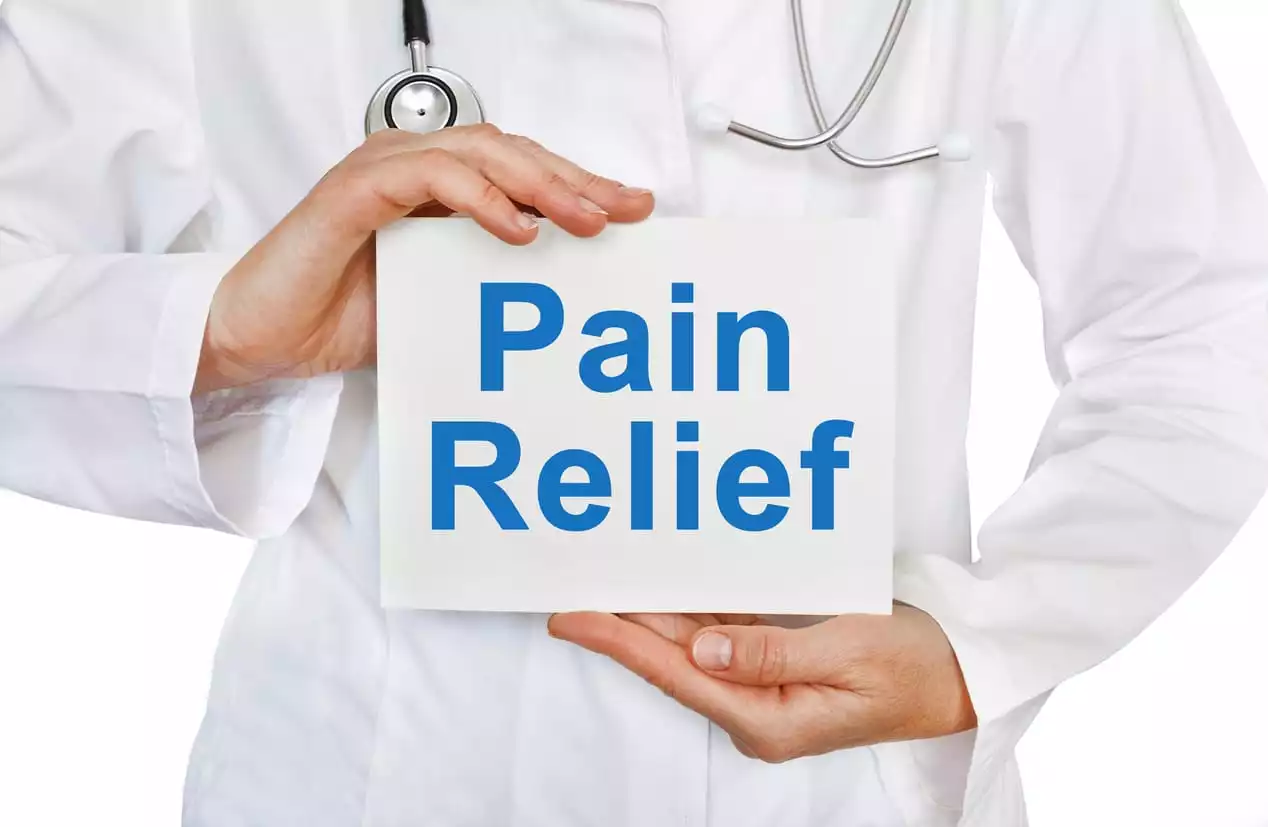
Every year, an incredible 76.2 million Americans struggle to cope with chronic pain across the United States. That’s nearly 25 percent of the population, or one in every four people. With this many people suffering, it’s essential to find chronic pain management techniques that work for you.
As the medical industry struggles to find good solutions to the issue of chronic, intractable pain, patients often feel left with few options. Worse yet, patients who don’t seek treatment or can’t find a good treatment that works are much more likely to lose time away from work or require long-term disability.
The Pain Problem
Part of the problem America faces right now is that treating chronic pain is extremely complex. No two patients are exactly alike and no two conditions are exactly alike. Therefore, no two chronic pain management techniques are alike. So, what works for one patient may be totally ineffective on another. Even the most classic drugs we have – opiates, NSAIDs, and Tylenol aren’t without side effects, some of which can be very harmful (like addiction).
Holistic Chronic Pain Management Techniques
What we do know about treating chronic pain is that a holistic approach works best, rather than only medicating or only treating the pain at the source. The word “holistic,” as it is used here, doesn’t refer to organics, homeopathy, or alternative medicine (although that can certainly be part of the process). Instead, it means to focusing on chronic pain management techniques from a whole-life perspective.
Patients and their care teams should use chronic pain management techniques that involve many aspects. This includes ways to adapt to chronic pain by altering the patient’s diet, lifestyle, and coping strategies to better suit their condition. In many ways, this is less about relieving the pain entirely and more about managing it long-term – including how it affects patients mentally and physically.
If you have chronic pain, keep reading.
Next, we’re going to talk a little bit about chronic pain management techniques you can use right at home to manage your pain. From breathing exercises to compounded topicals and massage, our goal is to help you help yourself to be as well as you can.
1. Reduce Your Stress
This is one of the biggest and most important chronic pain management techniques we can give you: reduce your overall life stress. It may seem overly simple, but stress plays a big role in chronic pain for many different reasons.
Firstly, stress increases the level of certain hormones in the blood, like cortisol or adrenaline, that may make you more aware of or more sensitive to pain in the first place. It also frequently causes us to tense up and hold our bodies in unnatural ways (scrunching up the face, slouching, tensing the forehead, etc). As a result, muscles can lock up, spasm, or begin to ache, worsening any existing pain issues.
If you suffer from chronic pain, take some time to sit down and reevaluate how much stress is in your life. Pare back where you can while preserving the things you love most in life. Keep track of stressful scenarios and whether or not they trigger your pain so you can avoid them in the future.
2. Try Breathing Exercises
To segue off of the previous section, breathing exercises may also help you reduce stress and cope with your pain – especially if you experience waves of pain or throbbing pain. These exercises work by slowing your breathing, reducing your heart rate, and tricking the body into feeling more at peace and relaxed.
To start, sit or lay in a comfortable position. Breathe in to the count of three or four; hold for a count of three or four; breathe out for a count of three or four. If you can’t hold your breath as long or only make it to two before your lungs are filled, that’s okay. You can adjust the count to what feels most comfortable to you.
You can use this exercise as often as you need to. Some patients set aside a time each day, while others may only use breathing exercises when they’re struggling. Others pair breathing with gentle yoga or meditation and find that effective, too.
3. Use Medical Aids to Reduce Triggers
Let’s go back to what we said about altering your lifestyle to better suit your chronic pain. Sometimes, what is most impactful isn’t our medication or even our therapies, but the way we live our lives day in and day out. Certain activities and behaviors may trigger pain in specific ways. Avoiding these triggers or finding ways to reduce their impacts can go a long way to helping you feel more capable and well. If you know a certain activity or task causes you pain, it only makes sense to find ways to reduce that impact.
Many of our patients use medical aids to make daily life and activities more comfortable. This includes seat risers which make sitting down or standing easier, raised toiled seats that prevent accidental falls and provide support in the bathroom, and extra-supportive back rests that provide more support where you need it most.
Braces, supports, kinetic tape, and bands also fall into this category. If you struggle with joint or muscle pain, your pharmacist can show you how to use these devices. They stabilize the area to reduce pain safely.
Lastly, if your chronic pain is tied to a mobility issue – for example, you experience pain when walking that limits your activity – walking aids such as walkers, canes, and wheelchairs may help. These devices give you a way to stay independent and mobile, even if you’re having a particularly bad pain day.
4. Use Tools for Easier Daily Tasks
To find chronic pain management techniques that work for you, determine which daily tasks trigger pain. Some devices aren’t so much medical devices as they are daily life tools to make tasks easier. These products focus on helping you complete daily tasks, like opening cans, doing up buttons, opening cupboard doors, doing the dishes, or even making the bed. This includes reaching tools, grip gloves, and joint-friendly kitchen utensils.
Easy-grip peelers, automatic peelers, food processors, automatic can openers, ergonomic scissors, and doorknob grips all fall into this category. They’re easy to install, simple to use, and can often be removed or applied on an as-needed basis!
If you find yourself really struggling with pain after cooking dinner, making the bed, handling chores, or even just reaching for items from a tall cupboard, consider giving these tools a try. There’s no reason to suffer in silence with so many options for support out there. They can make cooking, eating, and everyday living just a little more comfortable for you, and thus, more enjoyable, too.
5. Try Topical Ointments and Salves for Pain
Some patients who experience chronic pain find topical ointments and salves with pain-killing properties to be remarkably effective. These drugs (including NSAIDs like Voltaren and numbing gels like lidocaine) aren’t taken orally, so they often have a much safer use profile than oral medications. Furthermore, they can often be safely combined with other oral medications, unlike other drugs.
Finding chronic pain management techniques differ by person. Exactly which ointment or salve for pain you need depends on your condition and how it manifests. It may also vary depending on what kind of pain you experience. This includes neuropathic, musculoskeletal (of the muscles and bones), visceral (pain felt in the organs) or pain from cancer.
Neuropathic Pain
For neuropathic pain (pain involving the nerves), numbing agents (like lidocaine) or drugs that dampen nerve signal transmission (like gabapentin) are often best. These topicals are applied directly to the source of the pain when the pain is occuring. This is an excellent choice for people with Diabetic Neuropathy or Shingles.
Musculoskeletal Pain
For musculoskeletal pain, topicals containing capsaicin, menthol, NSAID drugs like voltaren, and antispasmodics may provide better pain relief. These drugs work by absorbing through the skin into the muscles. Here, they mute pain signals and encourage the area to relax. The only caveat here is that topicals aren’t as effective for very deep joint pain (e.g., pain from the inner hip).
Visceral Pain
Topicals generally aren’t advised for visceral pain from organs (e.g., gallbladder attack). These drugs just aren’t strong enough to penetrate the skin and reach the painful area in levels high enough to reduce pain. Ask your pharmacist or doctor for other options.
Cancer Pain
Often, cancer causes radiating pain that refers out along nerve bundles. Topicals for neuropathic pain may help to reduce this pain, but may be limited only to the localized area. If you have skin cancers that result in broken skin, you may need a specialized topical prescription that treats the wound as well as the pain.
Whichever type of pain you experience, it’s important to work closely with your pharmacist and care team to find the right option. Compounding pharmacies are especially adept at coming up with pain-relieving medication formulas for complex chronic pain management techniques. They can often customize the contents to create a medication just for you. Don’t be afraid to reach out; they’re always happy to chat.

 info@burtsrx.com
info@burtsrx.com
